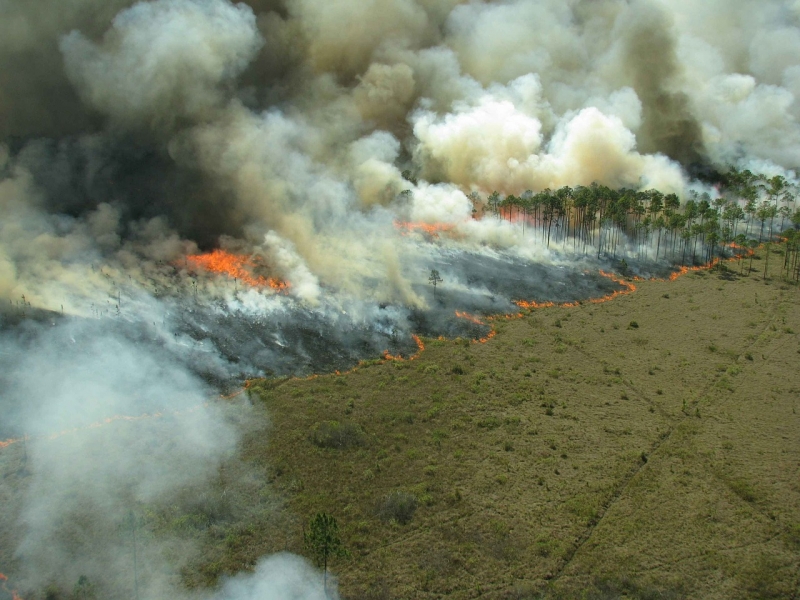In the last two weeks, Indonesian islands Sumatra and Borneo began experiencing severe forest fires, evoking fears within the region that the fires could have similar effects to the fires of 2015, which was one of the worst years for transboundary haze in Southeast Asia. Following the 2015 fires, Indonesia took steps to limit the burning and draining of peatland to reduce the outbreak of fires in addition to improving environmental sustainability and air quality in the region. However, due to a combination of governance challenges and climate change-intensifying dry seasons, the country has struggled to keep up with implementing fire mitigating activities in all fire-prone areas.
The pressures on the Indonesian government from the international community regarding transboundary haze, as well as local concerns about air quality, will unquestionably grow as fire events occur more often and at larger scales. Managing the fires, however, have been problematic, as there is inevitable conflict between the government, large Indonesian and international agri-business, and local peatland communities on adequate governance and legal measures to regulate peatland agriculture and forestry. Questions emerge, such as how to crack down on haze-emitting activities without jeopardizing the livelihoods of small-scale subsistence farmers in Indonesia. Furthermore, legal action taken by surrounding countries, such as Singapore and Malaysia, may play a major role in how Indonesia seeks to reduce transboundary haze in the future.
 Indonesian peat swamp forests are a valuable natural resource that have many ecological benefits such as regulating water levels, providing habitat for endangered species, and storing carbon. Despite these critical environmental roles, many areas of peat swamp in Indonesia are drained or cleared to make room for development or agricultural land, most prominently for the palm oil industry. Moreover, the most cost-effective way to clear this land is through burning, although burning produces organic toxins and releases greenhouse gases. Once burned continuously, peat swamp forests are unlikely to be revived due to combustion processes that eliminate the ability for the peat to re-absorb water. Large-scale destruction of these vulnerable landscapes have severe environmental, public health, and climatic consequences that must be addressed effectively.
Indonesian peat swamp forests are a valuable natural resource that have many ecological benefits such as regulating water levels, providing habitat for endangered species, and storing carbon. Despite these critical environmental roles, many areas of peat swamp in Indonesia are drained or cleared to make room for development or agricultural land, most prominently for the palm oil industry. Moreover, the most cost-effective way to clear this land is through burning, although burning produces organic toxins and releases greenhouse gases. Once burned continuously, peat swamp forests are unlikely to be revived due to combustion processes that eliminate the ability for the peat to re-absorb water. Large-scale destruction of these vulnerable landscapes have severe environmental, public health, and climatic consequences that must be addressed effectively.
Although larger private agri-business, agro-forestry, and palm oil companies in Indonesia practice most of the burning, not all burning is done by these parties. Smaller-scale subsistence agricultural operations also use the technique for their farming practices. Contrary to western understanding of peatland burning, when managed by peatland communities and on a small scale, this technique can be used as a sustainable farming practice. Criminalization of community management of peatland, the Indonesian government’s zero-burning policy, and the “artificial” recognition between the differences of industrial agriculture and community agriculture has resulted in the disruption of livelihoods and land rights established over generations.
In exchange for accountability, some argue that there are still not enough legal resources available for peatland communities to push back against injustice as well as guidance for investing in economically and environmentally viable solutions in lieu of peatland burning. Indonesia has implemented some efforts to incorporate community needs to restore peatlands, such as establishing the Peatland Restoration Agency in 2016 (an agency working to restore 10% of peatlands by 2020), but it still encounters pressures from domestic parties to resolve the issue more vigorously. Just this past July, a citizen suit led to a ruling by Indonesia’s highest court that the government was responsible for the 2015 fires.
Potential international legal action, mostly from Singapore’s government, has also contributed to this pressure. Transboundary haze from Indonesia’s fires was a major point of contention for Singapore, and Indonesia is likely to be under scrutiny again. Under the 2014 Transboundary Haze Pollution Act, Singapore can file a civil or criminal offense against any entity that contributes to haze in Singapore. To file a lawsuit, the Singaporean threshold of responsibility is low, with only a “causal link” such as a photograph or a map needed. In 2015, the country sued fived Indonesian companies for allegedly contributing to the transboundary haze. The lawsuits followed Singapore’s public concerns that the Indonesian government neglected responsibility and inadequately controlled domestic activity causing the fires. However, the prosecutions proved to be difficult since land use laws in Indonesia were often conflicting, and Singapore was not able to establish transparent cooperation between the companies and the Indonesian government officials. Despite the past difficulties, if the current situation worsens, Singapore or other surrounding countries could take similar action in the coming months ahead, tangling Indonesia in lawsuits internationally and domestically.
In a race against time, the recent fires reflect that climate change and more extreme weather patterns will continue to exacerbate the haze effects experienced by surrounding nations. And Indonesia will ultimately have to face the root of the cause by more closely monitoring and regulating large areas of fire-prone land owned by private companies, in addition to building judicial capacity locally and advocating for community-oriented fire prevention measures on the ground.
